formerly eScholarship Editions


|
|
|
|
Your search for
'European Studies' in subject
found 58 book(s). | Modify Search | Displaying 21 - 40 of 58 book(s) | |
| 21. | 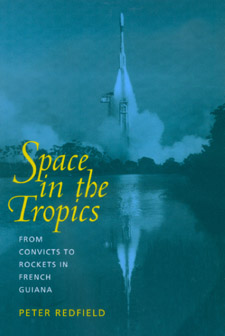 | Title: Space in the tropics: from convicts to rockets in French Guiana Author: Redfield, Peter 1965- Published: University of California Press, 2000 Subjects: Anthropology | Cultural Anthropology | Geography | French Studies | European Studies | Technology Publisher's Description: Rockets roar into space - bearing roughly half the world's commercial satellites - from the same South American coastal rainforest where convicts once did time on infamous Devil's Island. What makes Space in the Tropics enthralling is anthropologist Peter Redfield's ability to draw from these two disparate European projects in French Guiana a gleaming web of ideas about the intersections of nature and culture. In comparing the Franco-European Ariane rocket program with the earlier penal experiment, Redfield connects the myth of Robinson Crusoe, nineteenth-century prison reform, the Dreyfus Affair, tropical medicine, postwar exploration of outer space, satellite technology, development, and ecotourism with a focus on place, and the incorporation of this particular place into greater extended systems. Examining the wider context of the Ariane program, he argues that technology and nature must be understood within a greater ecology of displacement and makes a case for the importance of margins in understanding the trajectories of modern life. [brief] Similar Items |
| 22. |  | Title: The Perreaus and Mrs. Rudd: forgery and betrayal in eighteenth-century London Author: Andrew, Donna T 1945- Published: University of California Press, 2001 Subjects: History | European Studies | European History | Gender Studies Publisher's Description: The Perreaus and Mrs. Rudd tells the remarkable story of a complex forgery uncovered in London in 1775. Like the trials of Martin Guerre and O.J. Simpson, the Perreau-Rudd case--filled with scandal, deceit, and mystery--preoccupied a public hungry for sensationalism. Peopled with such familiar figures as John Wilkes, King George III, Lord Mansfield, and James Boswell, this story reveals the deep anxieties of this period of English capitalism. The case acts as a prism that reveals the hopes, fears, and prejudices of that society. Above all, this episode presents a parable of the 1770s, when London was the center of European finance and national politics, of fashionable life and tell-all journalism, of empire achieved and empire lost. The crime, a hanging offense, came to light with the arrest of identical twin brothers, Robert and Daniel Perreau, after the former was detained trying to negotiate a forged bond. At their arraignment they both accused Daniel's mistress, Margaret Caroline Rudd, of being responsible for the crime. The brothers' trials coincided with the first reports of bloodshed in the American colonies at Lexington and Concord and successfully competed for space in the newspapers. From March until the following January, people could talk of little other than the fate of the Perreaus and the impending trial of Mrs. Rudd. The participants told wildly different tales and offered strikingly different portraits of themselves. The press was filled with letters from concerned or angry correspondents. The public, deeply divided over who was guilty, was troubled by evidence that suggested not only that fair might be foul, but that it might not be possible to decide which was which. While the decade of the 1770s has most frequently been studied in relation to imperial concerns and their impact upon the political institutions of the day, this book draws a different portrait of the period, making a cause célèbre its point of entry. Exhaustively researched and brilliantly presented, it offers both a vivid panorama of London and a gauge for tracking the shifting social currents of the period. [brief] Similar Items |
| 23. | 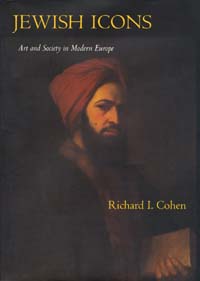 | Title: Jewish icons: art and society in modern Europe Author: Cohen, Richard I Published: University of California Press, 1998 Subjects: Art | Jewish Studies | European Studies | European History Publisher's Description: With the help of over one hundred illustrations spanning three centuries, Richard Cohen investigates the role of visual images in European Jewish history. The interaction of Jews with the visual arts takes place, as Cohen says, in a vast gallery of prints, portraits, books, synagogue architecture, ceremonial art, modern Jewish painting and sculpture, political broadsides, monuments, medals, and memorabilia. Pointing to recent scholarship that overturns the stereotype of Jews as people of the text, unconcerned with the visual, Cohen shows how the coming of the modern period expanded the relationship of Jews to the visual realm far beyond the religious context. Toward the end of the nineteenth century, the study and collecting of Jewish art became a legitimate and even passionate pursuit, and signaled the entry of Jews into the art world as painters, collectors, and dealers. [brief] Similar Items |
| 24. | 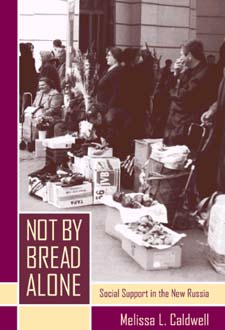 | Title: Not by bread alone: social support in the new Russia Author: Caldwell, Melissa L 1969- Published: University of California Press, 2004 Subjects: Anthropology | Russian and Eastern European Studies | European Studies Publisher's Description: What Muscovites get in a soup kitchen run by the Christian Church of Moscow is something far more subtle and complex - if no less necessary and nourishing - than the food that feeds their hunger. In Not by Bread Alone, the first full-length ethnographic study of poverty and social welfare in the postsocialist world, Melissa L. Caldwell focuses on the everyday operations and civil transactions at CCM soup kitchens to reveal the new realities, the enduring features, and the intriguing subtext of social support in Russia today. In an international food aid community, Caldwell explores how Muscovites employ a number of improvisational tactics to satisfy their material needs. She shows how the relationships that develop among members of this community - elderly Muscovite recipients, Russian aid workers, African student volunteers, and North American and European donors and volunteers - provide forms of social support that are highly valued and ultimately far more important than material resources. In Not by Bread Alone we see how the soup kitchens become sites of social stability and refuge for all who interact there - not just those with limited financial means - and how Muscovites articulate definitions of hunger and poverty that depend far more on the extent of one's social contacts than on material factors. By rethinking the ways in which relationships between social and economic practices are theorized - by identifying social relations and social status as Russia's true economic currency - this book challenges prevailing ideas about the role of the state, the nature of poverty and welfare, the feasibility of Western-style reforms, and the primacy of social connections in the daily lives of ordinary people in post-Soviet Russia. [brief] Similar Items |
| 25. | 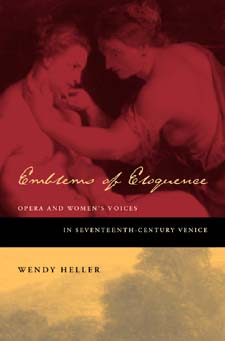 | Title: Emblems of eloquence: opera and women's voices in seventeenth-century Venice Author: Heller, Wendy Beth Published: University of California Press, 2004 Subjects: Music | European Studies | Opera | Classical Music | Women's Studies | Classical Literature and Language | Renaissance History Publisher's Description: Opera developed during a time when the position of women - their rights and freedoms, their virtues and vices, and even the most basic substance of their sexuality - was constantly debated. Many of these controversies manifested themselves in the representation of the historical and mythological women whose voices were heard on the Venetian operatic stage. Drawing upon a complex web of early modern sources and ancient texts, this engaging study is the first comprehensive treatment of women, gender, and sexuality in seventeenth-century opera. Wendy Heller explores the operatic manifestations of female chastity, power, transvestism, androgyny, and desire, showing how the emerging genre was shaped by and infused with the Republic's taste for the erotic and its ambivalent attitudes toward women and sexuality. Heller begins by examining contemporary Venetian writings about gender and sexuality that influenced the development of female vocality in opera. The Venetian reception and transformation of ancient texts - by Ovid, Virgil, Tacitus, and Diodorus Siculus - form the background for her penetrating analyses of the musical and dramatic representation of five extraordinary women as presented in operas by Claudio Monteverdi, Francesco Cavalli, and their successors in Venice: Dido, queen of Carthage (Cavalli); Octavia, wife of Nero (Monteverdi); the nymph Callisto (Cavalli); Queen Semiramis of Assyria (Pietro Andrea Ziani); and Messalina, wife of Claudius (Carlo Pallavicino). [brief] Similar Items |
| 26. | 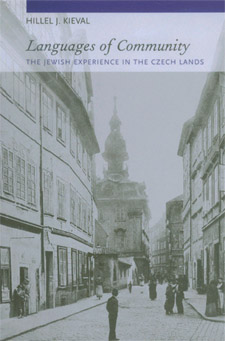 | Title: Languages of community: the Jewish experience in the Czech lands Author: Kieval, Hillel J Published: University of California Press, 2000 Subjects: Jewish Studies | European Studies | European History | Russian and Eastern European Studies | Judaism Publisher's Description: With a keen eye for revealing details, Hillel J. Kieval examines the contours and distinctive features of Jewish experience in the lands of Bohemia and Moravia (the present-day Czech Republic), from the late eighteenth to the late twentieth century. In the Czech lands, Kieval writes, Jews have felt the need constantly to define and articulate the nature of group identity, cultural loyalty, memory, and social cohesiveness, and the period of "modernizing" absolutism, which began in 1780, brought changes of enormous significance. From that time forward, new relationships with Gentile society and with the culture of the state blurred the traditional outlines of community and individual identity. Kieval navigates skillfully among histories and myths as well as demography, biography, culture, and politics, illuminating the maze of allegiances and alliances that have molded the Jewish experience during these 200 years. [brief] Similar Items |
| 27. | 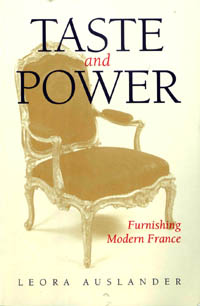 | Title: Taste and power: furnishing Modern France Author: Auslander, Leora Published: University of California Press, 1996 Subjects: History | European History | Art History | European Studies Publisher's Description: Louis XIV, regency, rococo, neoclassical, empire, art nouveau, and historicist pastiche: furniture styles march across French history as regimes rise and fall. In this extraordinary social history, Leora Auslander explores the changing meaning of furniture from the mid-seventeenth to the early twentieth century, revealing how the aesthetics of everyday life were as integral to political events as to economic and social transformations. Enriched by Auslander's experience as a cabinetmaker, this work demonstrates how furniture served to represent and even generate its makers' and consumers' identities. [brief] Similar Items |
| 28. | 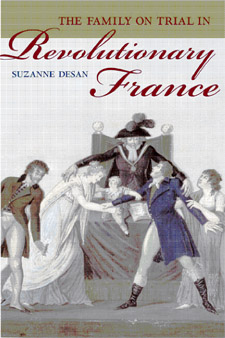 | Title: The family on trial in revolutionary France Author: Desan, Suzanne 1957- Published: University of California Press, 2004 Subjects: History | European Studies | French Studies | Women's Studies Publisher's Description: In a groundbreaking book that challenges many assumptions about gender and politics in the French Revolution, Suzanne Desan offers an insightful analysis of the ways the Revolution radically redefined the family and its internal dynamics. She shows how revolutionary politics and laws brought about a social revolution within households and created space for thousands of French women and men to reimagine their most intimate relationships. Families negotiated new social practices, including divorce, the reduction of paternal authority, egalitarian inheritance for sons and daughters alike, and the granting of civil rights to illegitimate children. Contrary to arguments that claim the Revolution bound women within a domestic sphere, The Family on Trial maintains that the new civil laws and gender politics offered many women unexpected opportunities to gain power, property, or independence. The family became a political arena, a practical terrain for creating the Republic in day-to-day life. From 1789, citizens across France - sons and daughters, unhappily married spouses and illegitimate children, pamphleteers and moralists, deputies and judges - all disputed how the family should be reformed to remake the new France. They debated how revolutionary ideals and institutions should transform the emotional bonds, gender dynamics, legal customs, and economic arrangements that structured the family. They asked how to bring the principles of liberty, equality, and regeneration into the home. And as French citizens confronted each other in the home, in court, and in print, they gradually negotiated new domestic practices that balanced Old Regime customs with revolutionary innovations in law and culture. In a narrative that combines national-level analysis with a case study of family contestation in Normandy, Desan explores these struggles to bring politics into households and to envision and put into practice a new set of familial relationships. [brief] Similar Items |
| 29. | 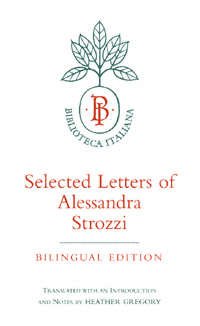 | Title: Selected letters of Alessandra Strozzi Author: Macinghi Strozzi, Alessandra 1407-1471 Published: University of California Press, 1997 Subjects: History | Renaissance History | Women's Studies | European Studies | Literature in Translation | Autobiography | European History | Letters Publisher's Description: The letters of Alessandra Strozzi provide a vivid and spirited portrayal of life in fifteenth-century Florence. Among the richest autobiographical materials to survive from the Italian Renaissance, the letters reveal a woman who fought stubbornly to preserve her family's property and position in adverse circumstances, and who was an acute observer of Medicean society. Her letters speak of political and social status, of the concept of honor, and of the harshness of life, including the plague and the loss of children. They are also a guide to Alessandra's inner life over a period of twenty-three years, revealing the pain and sorrow, and, more rarely, the joy and triumph, with which she responded to the events unfolding around her.This edition includes translations, in full or in part, of 35 of the 73 extant letters. The selections carry forward the story of Alessandra's life and illustrate the range of attitudes, concerns, and activities which were characteristic of their author. [brief] Similar Items |
| 30. | 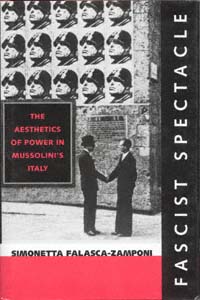 | Title: Fascist spectacle: the aesthetics of power in Mussolini's Italy Author: Falasca-Zamponi, Simonetta 1957- Published: University of California Press, 1997 Subjects: History | European History | Popular Culture | European Studies | Politics Publisher's Description: This richly textured cultural history of Italian fascism traces the narrative path that accompanied the making of the regime and the construction of Mussolini's power. Simonetta Falasca-Zamponi reads fascist myths, rituals, images, and speeches as texts that tell the story of fascism. Linking Mussolini's elaboration of a new ruling style to the shaping of the regime's identity, she finds that in searching for symbolic means and forms that would represent its political novelty, fascism in fact brought itself into being, creating its own power and history.Falasca-Zamponi argues that an aesthetically founded notion of politics guided fascist power's historical unfolding and determined the fascist regime's violent understanding of social relations, its desensitized and dehumanized claims to creation, its privileging of form over ethical norms, and ultimately its truly totalitarian nature. [brief] Similar Items |
| 31. | 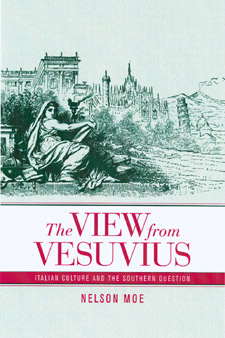 | Title: The view from Vesuvius: Italian culture and the southern question Author: Moe, Nelson 1961- Published: University of California Press, 2002 Subjects: European Studies | European History | Intellectual History | Politics | European Literature Publisher's Description: The vexed relationship between the two parts of Italy, often referred to as the Southern Question, has shaped that nation's political, social, and cultural life throughout the twentieth century. But how did southern Italy become "the south," a place and people seen as different from and inferior to the rest of the nation? Writing at the rich juncture of literature, history, and cultural theory, Nelson Moe explores how Italy's Mezzogiorno became both backward and picturesque, an alternately troubling and fascinating borderland between Europe and its others. This finely crafted book shows that the Southern Question is far from just an Italian issue, for its origins are deeply connected to the formation of European cultural identity between the mid-eighteenth and late nineteenth centuries. Moe examines an exciting range of unfamiliar texts and visual representations including travel writing, political discourse, literary texts, and etchings to illuminate the imaginative geography that shaped the divide between north and south. His narrative moves from a broad examination of the representation of the south in European culture to close readings of the literary works of Leopardi and Giovanni Verga. This groundbreaking investigation into the origins of the modern vision of the Mezzogiorno is made all the more urgent by the emergence of separatism in Italy in the 1990s. [brief] Similar Items |
| 32. |  | Title: Law and disorder on the Narova River: the Kreenholm strike of 1872 Author: Zelnik, Reginald E Published: University of California Press, 1995 Subjects: History | Labor Studies | European History | European Studies Publisher's Description: Reginald Zelnik uses a single episode - a militant strike at the Kreenholm factory, Europe's largest textile plant - to explore the broad historical moment. In examining this crucial event of Russian history he sheds fresh light on local power relations, high politics in St. Petersburg, controversies over the rule of law, and the origins of the Russian labor movement. Zelnik sees this pivotal moment in Russian labor history as the beginning step in the series of conflicts that eventually led to the upheavals of the early twentieth century. [brief] Similar Items |
| 33. | 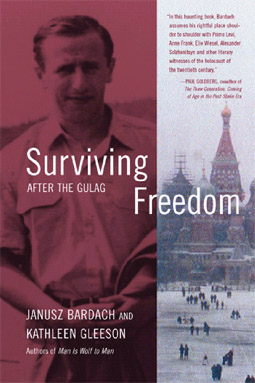 | Title: Surviving freedom: after the Gulag Author: Bardach, Janusz Published: University of California Press, 2003 Subjects: History | European Studies | Sociology | Politics | Russian and Eastern European Studies | Autobiography Publisher's Description: In 1941, as a Red Army soldier fighting the Nazis on the Belarussian front, Janusz Bardach was arrested, court-martialed, and sentenced to ten years of hard labor. Twenty-two years old, he had committed no crime. He was one of millions swept up in the reign of terror that Stalin perpetrated on his own people. In the critically acclaimed Man Is Wolf to Man, Bardach recounted his horrific experiences in the Kolyma labor camps in northeastern Siberia, the deadliest camps in Stalin's gulag system. In this sequel Bardach picks up the narrative in March 1946, when he was released. He traces his thousand-mile journey from the northeastern Siberian gold mines to Moscow in the period after the war, when the country was still in turmoil. He chronicles his reunion with his brother, a high-ranking diplomat in the Polish embassy in Moscow; his experiences as a medical student in the Stalinist Soviet Union; and his trip back to his hometown, where he confronts the shattering realization of the toll the war has taken, including the deaths of his wife, parents, and sister. In a trenchant exploration of loss, post-traumatic stress syndrome, and existential loneliness, Bardach plumbs his ordeal with honesty and compassion, affording a literary window into the soul of a Stalinist gulag survivor. Surviving Freedom is his moving account of how he rebuilt his life after tremendous hardship and personal loss. It is also a unique portrait of postwar Stalinist Moscow as seen through the eyes of a person who is both an insider and outsider. Bardach's journey from prisoner back to citizen and from labor camp to freedom is an inspiring tale of the universal human story of suffering and recovery. [brief] Similar Items |
| 34. | 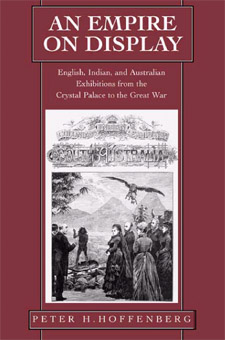 | Title: An empire on display: English, Indian, and Australian exhibitions from the Crystal Palace to the Great War Author: Hoffenberg, Peter H 1960- Published: University of California Press, 2001 Subjects: History | European History | Victorian History | Asian History | South Asia | Pacific Rim Studies | European Studies Publisher's Description: The grand exhibitions of the Victorian and Edwardian eras are the lens through which Peter Hoffenberg examines the economic, cultural, and social forces that helped define Britain and the British Empire. He focuses on major exhibitions in England, Australia, and India between the Great Exhibition of 1851 and the Festival of Empire sixty years later, taking special interest in the interactive nature of the exhibition experience, the long-term consequences for the participants and host societies, and the ways in which such popular gatherings revealed dissent as well as celebration. Hoffenberg shows how exhibitions shaped culture and society within and across borders in the transnational working of the British Empire. The exhibitions were central to establishing and developing a participatory imperial world, and each polity in that world provided distinctive information, visitors, and exhibits. Among the displays were commercial goods, working machines, and ethnographic scenes. Exhibits were intended to promote external commonwealth and internal nationalism. The imperial overlay did not erase significant differences but explained and used them in economic and cultural terms. The exhibitions in cities such as London, Sydney, and Calcutta were living and active public inventories of the Empire and its national political communities. The process of building and consuming such inventories persists today in the cultural bureaucracies, museums, and festivals of modern nation-states, the appeal to tradition and social order, and the actions of transnational bodies. [brief] Similar Items |
| 35. | 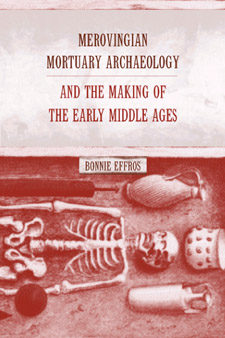 | Title: Merovingian mortuary archaeology and the making of the early Middle Ages Author: Effros, Bonnie 1965- Published: University of California Press, 2003 Subjects: Classics | European Studies | Archaeology | Ancient History | Medieval History | Archaeology Publisher's Description: Clothing, jewelry, animal remains, ceramics, coins, and weaponry are among the artifacts that have been discovered in graves in Gaul dating from the fifth to eighth century. Those who have unearthed them, from the middle ages to the present, have speculated widely on their meaning. This authoritative book makes a major contribution to the study of death and burial in late antique and early medieval society with its long overdue systematic discussion of this mortuary evidence. Tracing the history of Merovingian archaeology within its cultural and intellectual context for the first time, Effros exposes biases and prejudices that have colored previous interpretations of these burial sites and assesses what contemporary archaeology can tell us about the Frankish kingdoms. Working at the intersection of history and archaeology, and drawing from anthropology and art history, Effros emphasizes in particular the effects of historical events and intellectual movements on French and German antiquarian and archaeological studies of these grave goods. Her discussion traces the evolution of concepts of nationhood, race, and culture and shows how these concepts helped shape an understanding of the past. Effros then turns to contemporary multidisciplinary methodologies and finds that we are still limited by the types of information that can be readily gleaned from physical and written sources of Merovingian graves. For example, since material evidence found in the graves of elite families and particularly elite men is more plentiful and noteworthy, mortuary goods do not speak as directly to the conditions in which women and the poor lived. The clarity and sophistication with which Effros discusses the methods and results of European archaeology is a compelling demonstration of the impact of nationalist ideologies on a single discipline and of the struggle toward the more pluralistic vision that has developed in the post-war years. [brief] Similar Items |
| 36. | 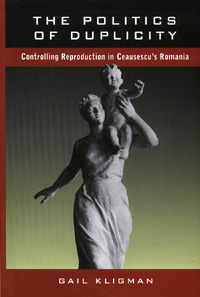 | Title: The politics of duplicity: controlling reproduction in Ceausescu's Romania Author: Kligman, Gail Published: University of California Press, 1998 Subjects: Sociology | Social Problems | Women's Studies | Russian and Eastern European Studies | European Studies | Politics Publisher's Description: The political hypocrisy and personal horrors of one of the most repressive anti-abortion regimes in history came to the world's attention soon after the fall of Romanian dictator Nicolae Ceausescu. Photographs of orphans with vacant eyes, sad faces, and wasted bodies circled the globe, as did alarming maternal mortality statistics and heart-breaking details of a devastating infant AIDS epidemic. Gail Kligman's chilling ethnography - of the state and of the politics of reproduction - is the first in-depth examination of this extreme case of political intervention into the most intimate aspects of everyday life.Ceausescu's reproductive policies, among which the banning of abortion was central, affected the physical and emotional well-being not only of individual men, women, children, and families but also of society as a whole. Sexuality, intimacy, and fertility control were fraught with fear, which permeated daily life and took a heavy moral toll as lying and dissimulation transformed both individuals and the state. This powerful study is based on moving interviews with women and physicians as well as on documentary and archival material. In addition to discussing the social implications and human costs of restrictive reproductive legislation, Kligman explores the means by which reproductive issues become embedded in national and international agendas. She concludes with a review of the lessons the rest of the world can learn from Romania's tragic experience. [brief] Similar Items |
| 37. | 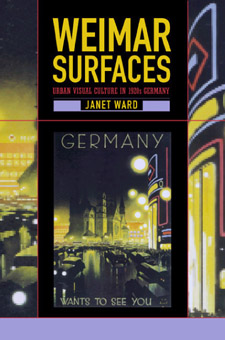 | Title: Weimar surfaces: urban visual culture in 1920s Germany Author: Ward, Janet 1963- Published: University of California Press, 2001 Subjects: Literature | Architecture | Film | European Studies | European History | Popular Culture Publisher's Description: Germany of the 1920s offers a stunning moment in modernity, a time when surface values first became determinants of taste, activity, and occupation: modernity was still modern, spectacle was still spectacular. Janet Ward's luminous study revisits Weimar Germany via the lens of metropolitan visual cu . . . [more] Similar Items |
| 38. | 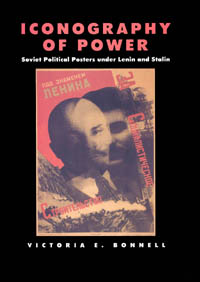 | Title: Iconography of power: Soviet political posters under Lenin and Stalin Author: Bonnell, Victoria E Published: University of California Press, 1998 Subjects: Sociology | Popular Culture | European Studies | Russian and Eastern European Studies | Politics | Art Criticism | History | European History Publisher's Description: Masters at visual propaganda, the Bolsheviks produced thousands of vivid and compelling posters after they seized power in October 1917. Intended for a semi-literate population that was accustomed to the rich visual legacy of the Russian autocracy and the Orthodox Church, political posters came to occupy a central place in the regime's effort to imprint itself on the hearts and minds of the people and to remold them into the new Soviet women and men. In this first sociological study of Soviet political posters, Victoria Bonnell analyzes the shifts that took place in the images, messages, styles, and functions of political art from 1917 to 1953. Everyone who lived in Russia after the October revolution had some familiarity with stock images of the male worker, the great communist leaders, the collective farm woman, the capitalist, and others. These were the new icons' standardized images that depicted Bolshevik heroes and their adversaries in accordance with a fixed pattern. Like other "invented traditions" of the modern age, iconographic images in propaganda art were relentlessly repeated, bringing together Bolshevik ideology and traditional mythologies of pre-Revolutionary Russia. Symbols and emblems featured in Soviet posters of the Civil War and the 1920s gave visual meaning to the Bolshevik worldview dominated by the concept of class. Beginning in the 1930s, visual propaganda became more prescriptive, providing models for the appearance, demeanor, and conduct of the new social types, both positive and negative. Political art also conveyed important messages about the sacred center of the regime which evolved during the 1930s from the celebration of the heroic proletariat to the deification of Stalin. Treating propaganda images as part of a particular visual language, Bonnell shows how people "read" them - relying on their habits of seeing and interpreting folk, religious, commercial, and political art (both before and after 1917) as well as the fine art traditions of Russia and the West. Drawing on monumental sculpture and holiday displays as well as posters, the study traces the way Soviet propaganda art shaped the mentality of the Russian people (the legacy is present even today) and was itself shaped by popular attitudes and assumptions. Iconography of Power includes posters dating from the final decades of the old regime to the death of Stalin, located by the author in Russian, American, and English libraries and archives. One hundred exceptionally striking posters are reproduced in the book, many of them never before published. Bonnell places these posters in a historical context and provides a provocative account of the evolution of the visual discourse on power in Soviet Russia. [brief] Similar Items |
| 39. | 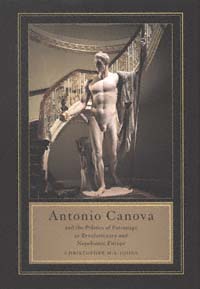 | Title: Antonia Canova and the politics of patronage in revolutionary and Napoleonic Europe Author: Johns, Christopher M. S Published: University of California Press, 1998 Subjects: Art | Art History | European Studies | European History Publisher's Description: The Venetian sculptor Antonio Canova (1757-1822) was Europe's most celebrated artist from the end of the ancien régime to the early years of the Restoration, an era when the traditional relationship between patrons and artists changed drastically. Christopher M. S. Johns's refreshingly original study explores a neglected facet of Canova's career: the effects of patrons, patronage, and politics on his choice of subjects and manner of working. While other artists produced art in the service of the state, Canova resisted the blandishments of the political powers that commissioned his works.Johns uses letters, diaries, and biographies to establish a political personality for Canova as an individual and an artist of international reputation. Though he had patrons as diverse as the pope, Napoleon, the Austrian Hapsburgs, the Prince Regent of Great Britain, and the Republic of Venice, Canova remained steadily employed and did so without controversy. A conservative and a Catholic, he devised a strategy that enabled him to work for patrons who were avowed enemies while remaining true to the cultural and artistic heritage of his Italian homeland. Using myth and funerary images and avoiding portraiture, he disguised the meanings behind his works and thus avoided their being identified with any political purpose.Johns greatly enhances our understanding of Canova's place in European art and political history, and in showing the influence of censorship, display, visual narrative, and propaganda, he highlights issues as contentious today as they were in Canova's time. [brief] Similar Items |
| 40. | 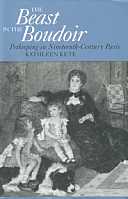 | Title: The beast in the boudoir: petkeeping in nineteenth-century Paris Author: Kete, Kathleen Published: University of California Press, 1994 Subjects: History | European History | French Studies | European Studies Publisher's Description: Kathleen Kete's wise and witty examination of petkeeping in nineteenth-century Paris provides a unique window through which to view the lives of ordinary French people. She demonstrates how that cliché of modern life, the family dog, reveals the tensions that modernity created for the Parisian bourgeoisie.Kete's study draws on a range of literary and archival sources, from dog-care books to veterinarians's records to Dumas's musings on his cat. The fad for aquariums, attitudes toward vivisection, the dread of rabies, the development of dog breeding - all are shown to reflect the ways middle-class people thought about their lives. Petkeeping, says Kete, was a way to imagine a better, more manageable version of the world - it relieved the pressures of contemporary life and improvised solutions to the intractable mesh that was post-Enlightenment France. The faithful, affectionate family dog became a counterpoint to the isolation of individualism and lack of community in urban life. By century's end, however, animals no longer represented the human condition with such potency, and even the irascible, autonomous cat had been rehabilitated into a creature of fidelity and affection.Full of fascinating details, this innovative book will contribute to the way we understand culture and the creation of class. [brief] Similar Items |